In part one of this subject, we discussed that a skilled worker doesn’t always transition well into a skilled leader. Just like workers have a learning curve and require training to learn and hone their skill, crew leaders, supervisors, and foremen also need to be taught leadership skills. The following are some recommendations to prepare your leaders.
- Leadership skills training
- Most people benefit from learning through:
- Education: Many local colleges have courses. In fact, Greenville Tech offers a Workforce Pathways scholarship through state funding. If you are a South Carolina resident and can pass a drug test, you can receive up to $4,000.00 to prepare you to advance in a career.
- Training.
- Experience.
- Most people benefit from learning through:
- Four key aspects of a true leader
Use the following to identify the areas where your leaders require further training.
- Lead by Example
- Have a constant, positive attitude.
- Be consistent with your pro-safety message.
- Practice what you preach; perform the safe actions you expect of others.
Danger! Erratic safety messages reinforce worker perceptions that:
- Productivity takes priority over safety.
- It’s fine to cut corners, not wear PPE, or not report close calls.
- . Innovation
- Supervisors must communicate information about:
- How to perform work tasks.
- Potential hazards.
- Encourage workers who are exposed to hazards to share their solutions during regular pre-task planning meetings.
- A magnificent solution to a difficult problem is an employee reward program for positive safety action.
- 2. Coaching
- Supervisors and foremen collaborate with workers to create safety goals.
- Collective goals are achieved by removing barriers and providing feedback.
- Implement these steps for beneficial feedback and coaching:
- The supervisor tells the worker:
- What was observed.
- Why it was risky.
- The potential outcomes if the activity continues.
- Provide a suggestion for a better way.
- Then together they create a goal and plan for changes (if needed).
- Immediate feedback is vital, before worker has already forgotten what he did.
- The supervisor tells the worker:
- Supervisors must communicate information about:
Coaching objective should be in line with the overall safety plan and should seek continuous improvement.
- 3. Motivates others
- Inspire workers and empower them to take actions of safety for themselves and others.
- Ensure clear understanding of all expectations, obligations, and opportunities.
- Attend and offer input at daily pre-task planning meetings;
- Take all mandatory safety training;
- Put into practice what they learned;
- Stop work and notifying their supervisor or foreman when hazards are identified; and
- Report all near misses/close calls.
- Trust is gained when a supervisor or foreman carefully listens, takes worker input seriously, and involves them in executing suggestions.
- Root-cause investigation, not blame game, should be conducted when an incident happens.
- Everyone shares in identifying lessons learned, reducing the risk, and preventing future incidents.
- 4. Performance evaluations
- Performance evaluations should emphasize the supervisor’s and foreman’s safety leadership skills and their contribution toward achieving safety goals.
- Evaluate them according to the criteria previously mentioned.
- Request confidential and/or anonymous worker input and observe the on-site leadership behavior of the supervisor and foreman.
- Management should discuss the strengths and shortcomings found during the evaluation with the supervisors and foremen, and together establish goals for betterment, including additional leadership education.
- Cultural competency
- Train leaders to expect and contemplate immigrant bias and beliefs.
- Guide them to take into consideration language barriers.
- Teach them to overcome cultural barriers.
So far in our safety culture series, we have reflected on management commitment, a written plan, accountability, and training leaders. Next up, employee empowerment.


